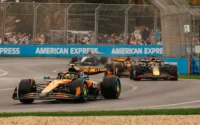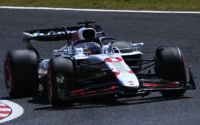The Suzuka Circuit, officially known as the Suzuka International Racing Course, is an F1 fan favourite located in Ino, Suzuka City, Japan. It spans 5.807 km and is capable of holding up to 155,000 fans.
The popularity of F1 fans for Suzuka is undeniable. In 1990, the Japanese Grand Prix had a staggering three million of them vying for just 120,000 tickets in a draw. At the time, Honda was having immense success as an engine supplier for the Williams and McLaren teams; combined with Japan’s first full-time F1 driver in Satoru Nakajima and the unwavering popularity of Ayrton Senna, everything contributed to a frenzy surrounding the event.
Suzuka Circuit
| First Grand Prix | 1987 Japanese Grand Prix |
| Number of Laps | 52 |
| Circuit Length | 5.281 km (3.281 miles) |
| Race Distance | 301.664 km (187.445 miles) |
| Lap Record | 1:26.983 Max Verstappen (2025) |
Circuit
When was the Suzuka Circuit built?
The Suzuka Circuit boasts one of the most exciting track layouts in F1. At almost 6km and split into two distinct halves, the track is almost unchanged since it was built in 1962.
The first half, an intricate technical section, is a flowing combination of corners. Drivers must navigate the GYAKU Bank Curve, aptly named as it almost leads drivers off the track, and the infamous Degner Curve, named after a driver who crashed there. Any minor hiccup riding the curves can send a driver hurtling off the track.
The second half of the course, no less demanding, is an exhilarating combination of slow, medium, and high-speed corners. From the slowest hairpin, through the multi R curves, and on to the West straight section, drivers push the limits of their cars before rocketing through the 130R turn and beyond.
Despite the track’s challenges, the Suzuka Circuit is a favourite among drivers. Its unique layout and technical demands give drivers eager to push themselves to the limit, a race that has become legendary in F1 history.
When was the first Japanese Grand Prix?
The Formula One Japanese Grand Prix of 1976 and 1977 were initially held at the Fuji Speedway before Japan was eventually removed from the calendar. In 1987, the event returned to Japan, hosted exclusively at Suzuka for the next 20 years, gaining a reputation as one of the most demanding circuits in Formula One.
In 2007, F1 returned to the newly redesigned Fuji Speedway before alternating between it and Suzuka in subsequent years. However, in 2009, Toyota, the owner of the Fuji Speedway, announced that the race would not be held there due to the global economic downturn. As a result, the event returned to Suzuka, where it has been held annually, except for 2020 and 2021, when the COVID-19 pandemic caused the cancellation of both Grand Prix.
The track has a traditional significance as it has, in the past, hosted one of the last Grand Prix of the season, and it has been witness to numerous world championships being decided over the years. In the early years of its return to F1, the circuit saw four consecutive world championships being decided – the 1988 championship was won by Ayrton Senna, the controversial 1989 championship by Alain Prost, and the 1990 and 1991 championships were both won by Senna.
Suzuka Circuit lap record
The official lap record for the current F1 Grand Prix circuit layout is 1:26.983, set by Max Verstappen, driving for Red Bull Racing, during qualifying for the 2025 Japanese Grand Prix.


